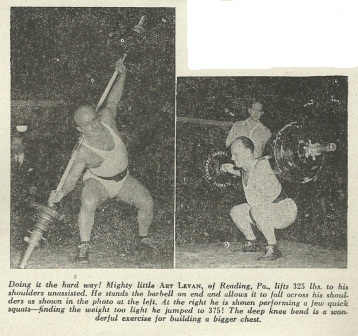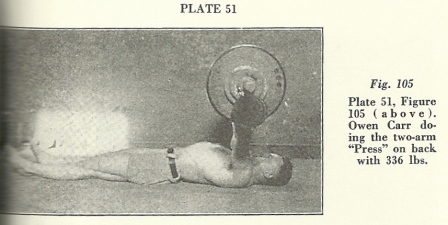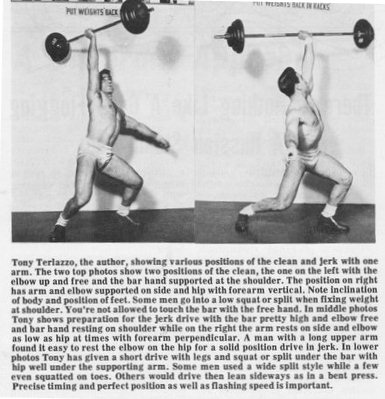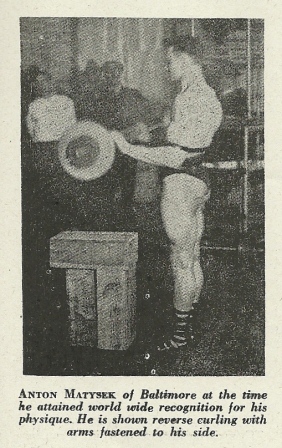Steinborn (Steinborn Lift)
by Al Myers
The “finale lift” on DAY ONE of the IAWA World Championships is the Steinborn Lift. The Steinborn Lift has a long standing history as a competitive lift with the IAWA. It has been often contested at World Championships. It is the TRUE ALL ROUND version of the squat. But instead of taking the bar from squat stands, you load the bar onto the shoulders from the platform! Once in that position, the rules of the squat apply until it is time to replace the bar to the floor – and that must be done in exactly the reverse order of the way you loaded it to the shoulders in the first place! It is a very challenging event. Often for most lifters the “test” of it depends on what can be loaded onto the shoulders – NOT the squat portion. I know that is the way it has always been for myself. I have always been able to squat easily with whatever weight I could get from the platform to my shoulders.
The IAWA Rules for the Steinborn Lift is:
E9. STEINBORN LIFT
The rules of performance for the squat apply, except that the lifter has to take the bar from the floor to the shoulders, using a series of movements to get the bar in position, and be ready to receive the signal to squat. Following the completion of the squat and receiving the referees signal to replace the bar, the lifter must again use a series of movements to take the bar back to the lifting surface, under control. To get the bar to the shoulders the lifter will stand the bar on end and move into a position against the bar so that the bar can fall or be rocked onto the shoulders. The bar can be brought onto one shoulder if desired, but must then be pivoted around and into position across the shoulders at the back of the neck. An aide can assist the lifter by placing a foot against the bottom of the up – ended bar to stop it sliding, both before and after the squat lift.
Causes for Failure:
1. The causes for failure are the same as for the squat once the bar has been received at the shoulders.
2. Failure to replace the bar to the platform in the same manner it was lifted, and under control.
A question on the USAWA Discussion Forum arose whether spotters could be allowed on the platform while the Steinborn is being executed. Apparently sometime in the past history of the IAWA this was not allowed. However, now that is not a violation. The Steinborn is like any other lift – and the use of spotters is allowed. But just like any lift, if the spotters assist in any way the lift is not a good lift (except for the assistant which provides the foot to prevent the bar from sliding). It is a debatable point if using spotters help with safety. I actually prefer not to have spotters when I’m doing a Steinborn. Timing and technique has to be perfect to perform a Steinborn, and it is very easy for the “bar to get away from you”. If this happens, I would prefer to be able to “dump it” without risking injury to any spotters trying to assist me. I have seen injuries happen to spotters before with the Steinborn.



